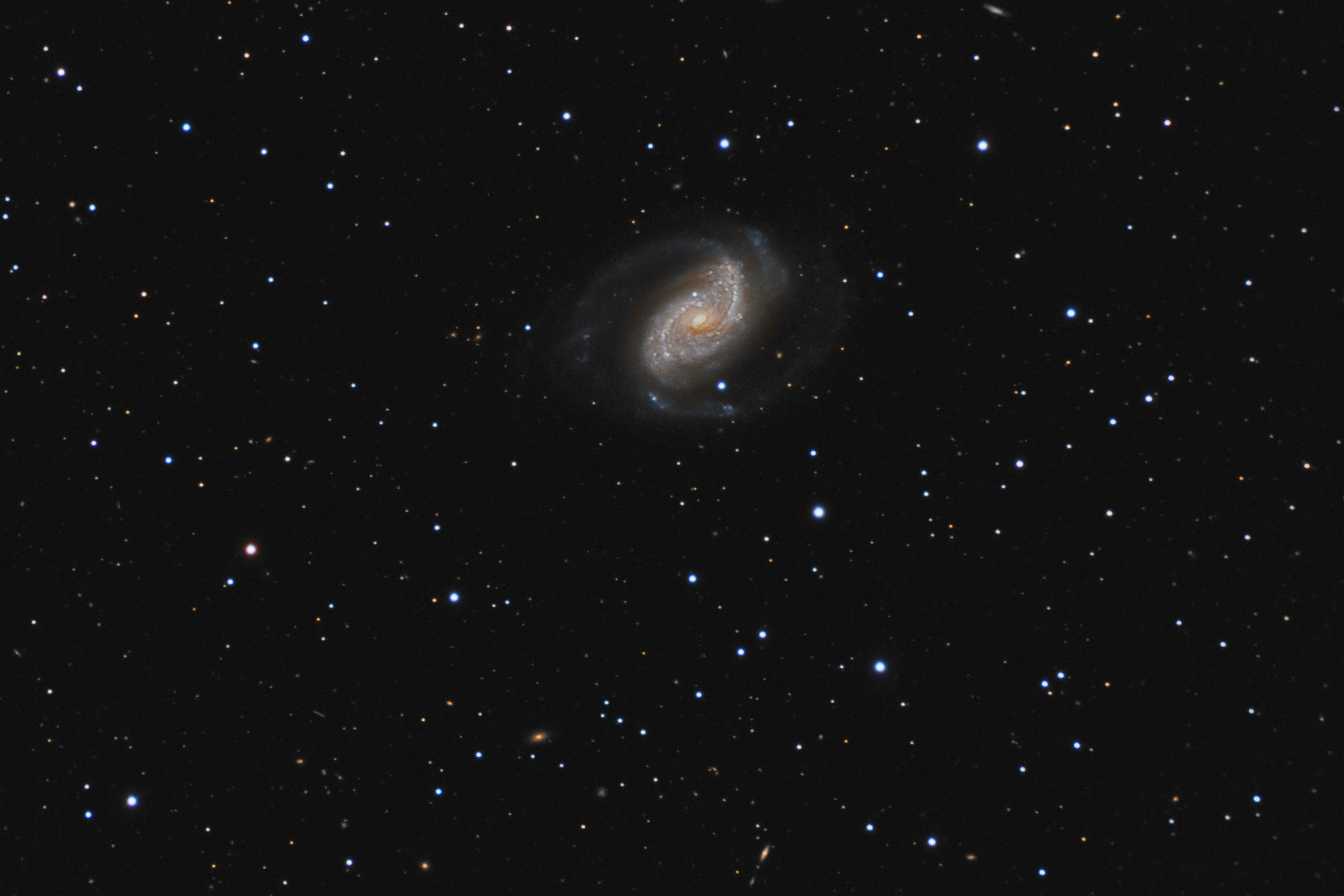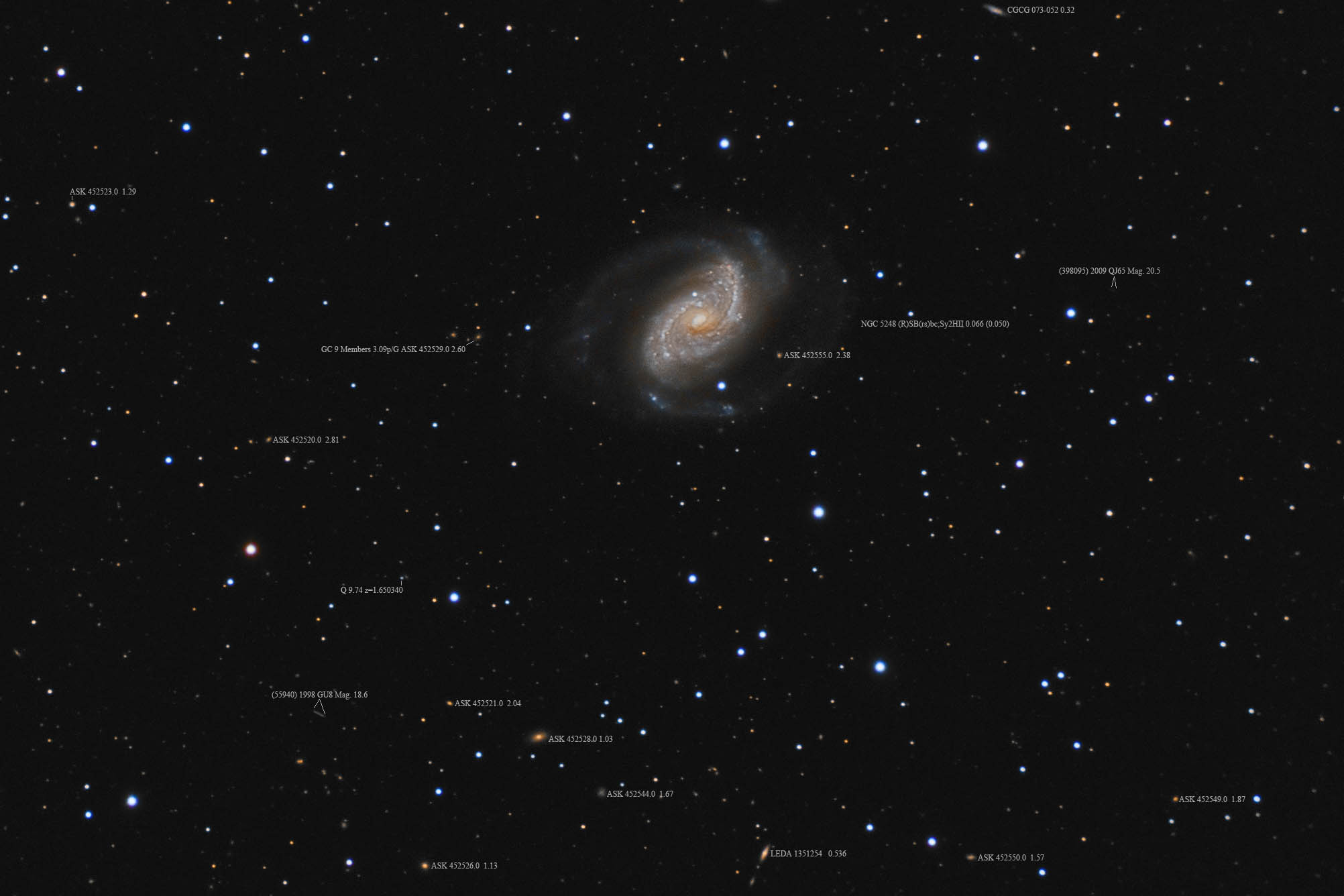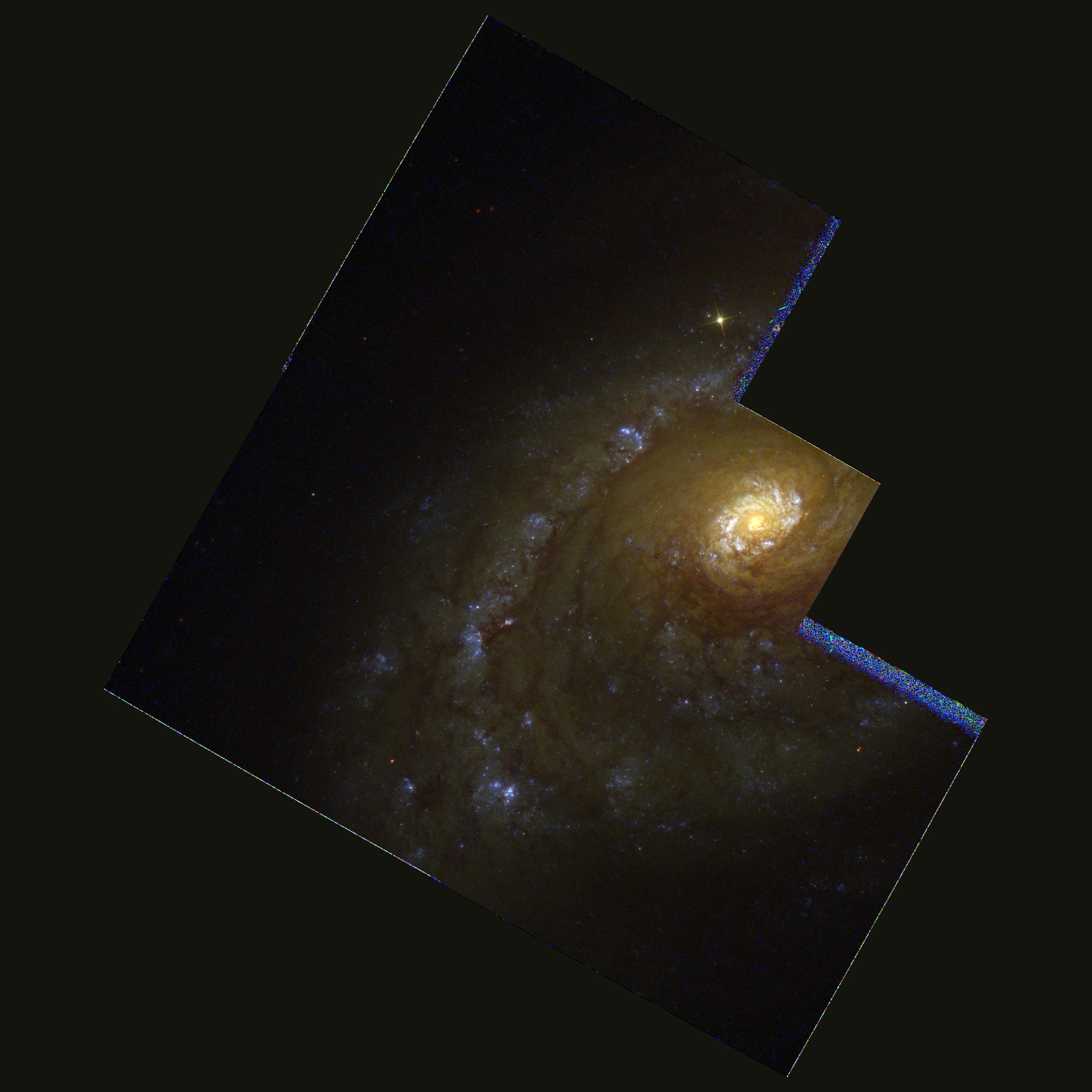| Description | Images |
Object name: NGC5248Designation(s): NGC5248, NGC 5248 is a spectacular spiral galaxy that doesn't get nearly the attention from amateur imagers as it should. It is located in the very southwest corner of Bootes just over the border from Virgo and is considered a member of one arm of the Virgo Cluster. That means its distance is likely in the 50 to 60 million light-year range. I can't find any consensus in the literature. I'm going to go with the 60 million light-year figure as it is a good average for the cluster. Even though the average of all non-redshift measurements at NED are only 50 million light-years with the newest estimates at only 40 million. Assuming the 60 million light-year distance it is some 170,000 light-years in diameter when the very faint outer arms are included. Some but not all classifications consider these outer arms a pseudo-ring giving its classification as (R)SB(rs)bc. It also has a Seyfert 2 core with HII emission. This comes from a ring of star-forming clouds 12" in diameter around the core. Seeing was fair for my image but I only picked up this ring as a mottling around the outer edge of the round core. High-resolution images from the HST show the core has its own spiral structure, sort of a spiral within a spiral. https://upload.wikimedia.org/wikipedia/commons/f/f1/Ngc5248-hst-R814G547B336.jpg Oddly, even with all this star formation going on one paper calls the galaxy inactive. http://mnras.oxfordjournals.org/content/379/4/1249.full.pdf They also give its distance as 74 million light-years. While the core is quite active the disk appears to have little star formation. Some images show a few HII regions in the main dust lane but they are small. The overall color of the galaxy is much redder than in most spirals. It may be this lack of disk star formation that caused it to be listed as inactive in the paper though it does contrast it to Seyfert 2 galaxies without ever mentioning it too is a Seyfert 2 galaxy. Related Designation(s):2MASS J13373201+0853064, 2MASX J13373206+0853062, 87GB 133501.4+090933, 87GB[BWE91] 1335+0909, AKARI J1337319+085306, ALFALFA 3-552, CGCG 073-054, CGCG 1335.0+0908, HIPASS J1337+08, HIR J1337+0853, IRAS 13350+0908, IRAS F13350+0908, MCG +02-35-015, MG1 J133728+0854, NGC 5248, NGC5248, NSA 143701, NVSS J133732+085309, PGC 048130, PMN J1337+0854, SDSS J133732.02+085306.6, UGC 08616, USGC U552 NED02, UZC J133732.0+085308, WVFSCC J133726+085504, [BEC2010] HRS 295, [RHM2006] SFGs 031, [WB92] 1335+0909, |



